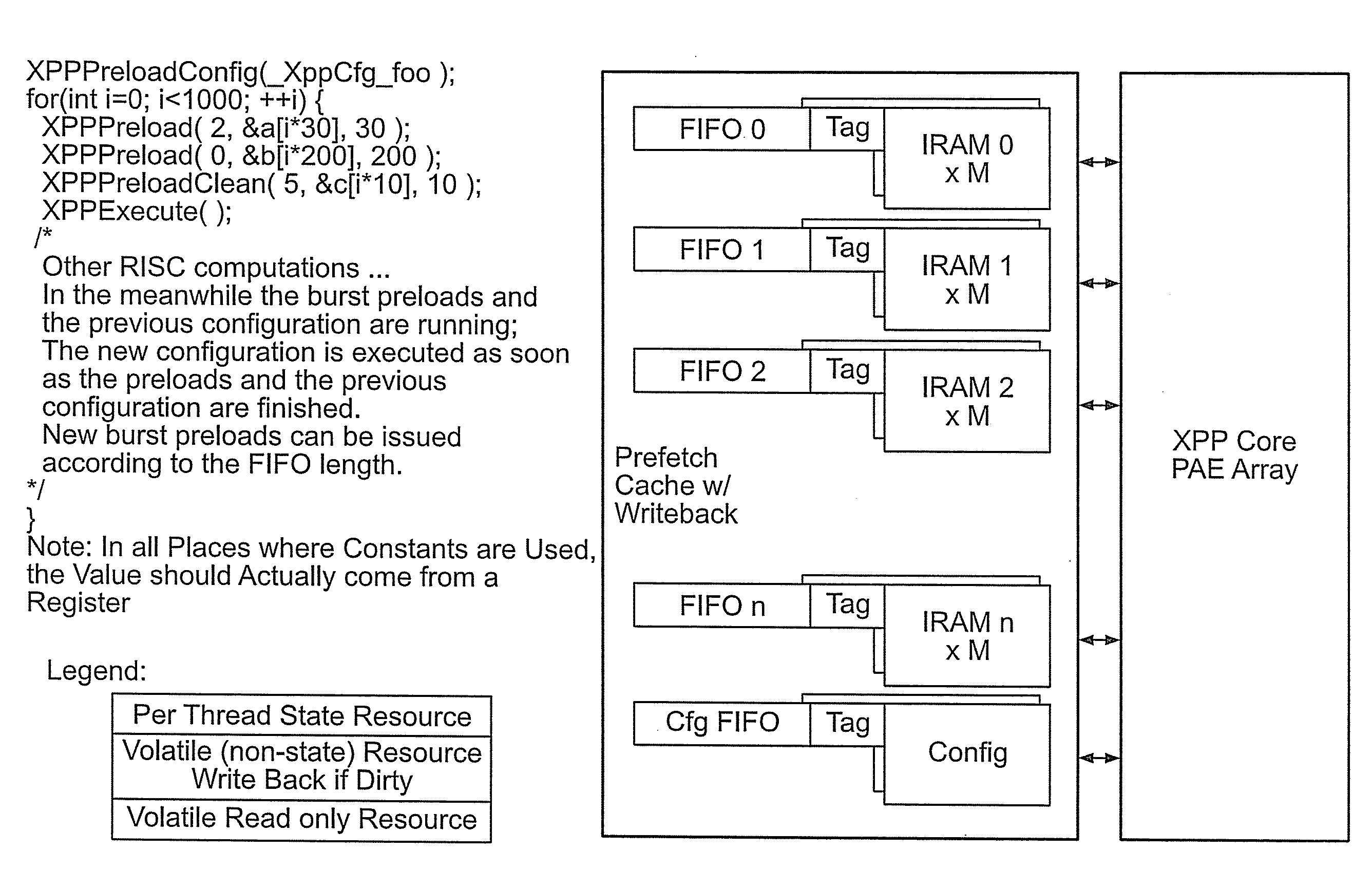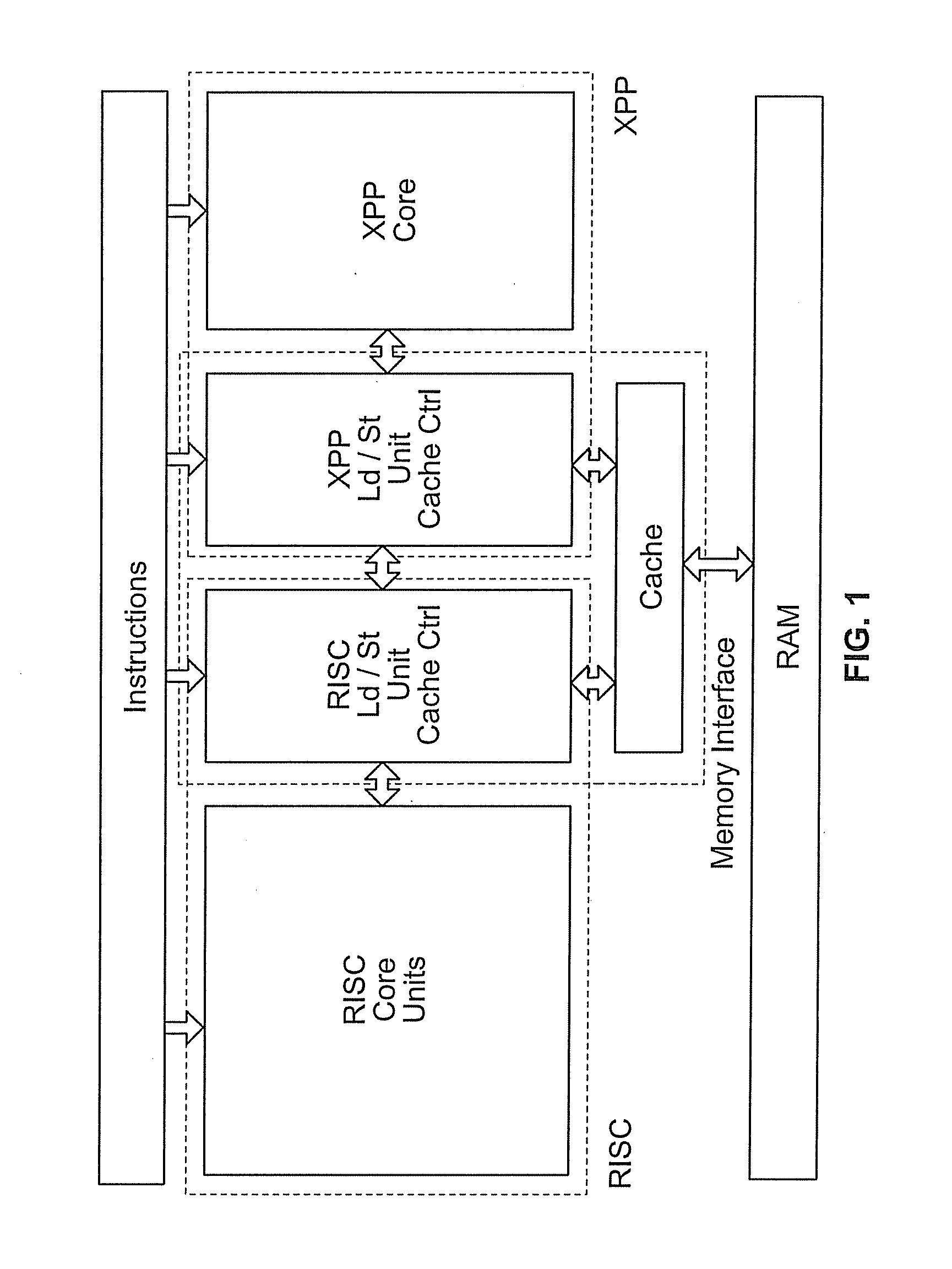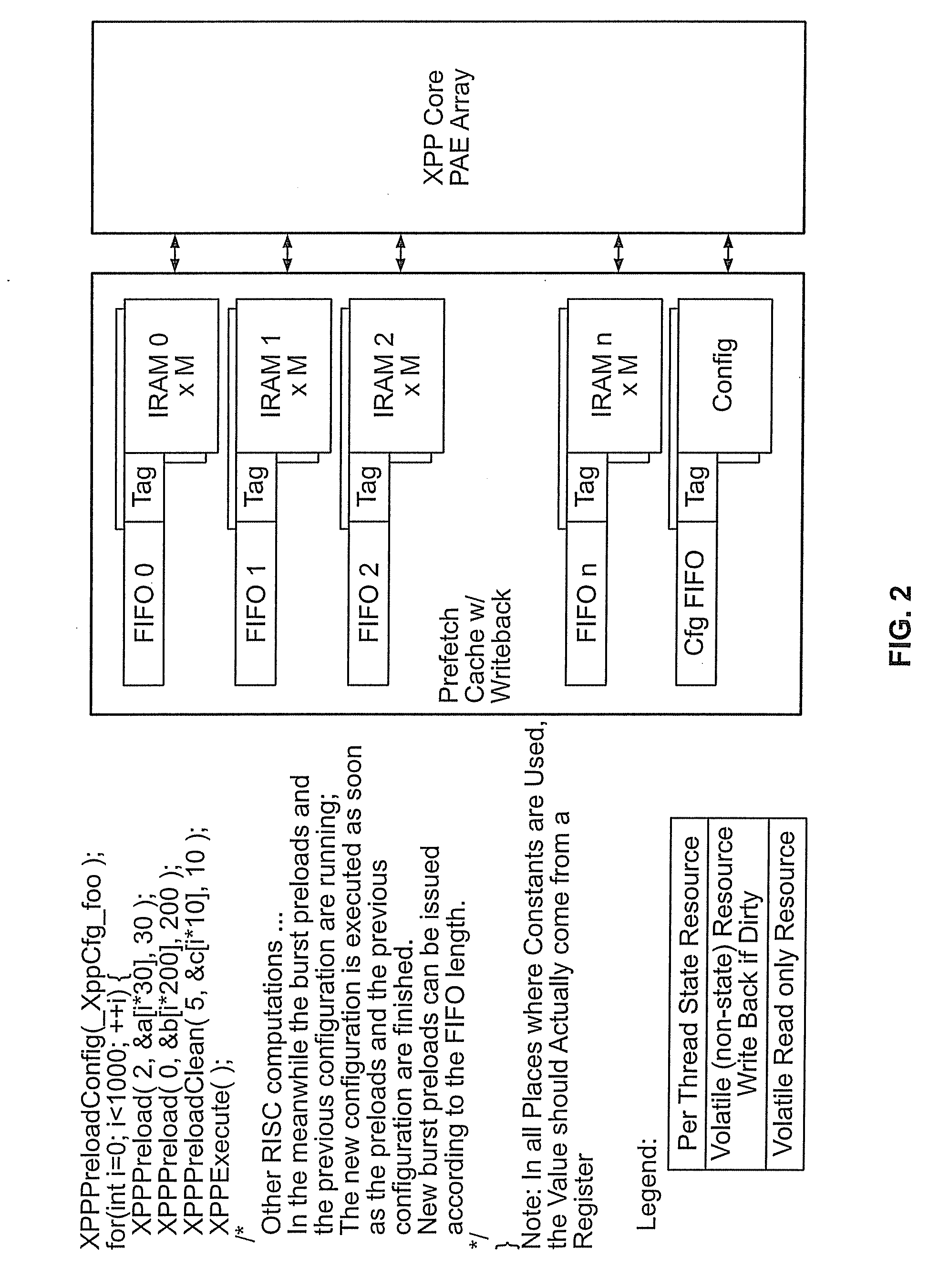[0013]A way out of limitations of conventional microprocessors may be a dynamic reconfigurable processor
datapath extension achieved by integrating traditional static datapaths with the coarse-grain dynamic reconfigurable XPP-architecture (eXtreme
Processing Platform). Embodiments of the present invention introduce a new concept of loosely coupled implementation of the dynamic reconfigurable XPP architecture from PACT Corp. into a static
datapath of the SPARC compatible LEON processor. Thus, this approach is different from those where the XPP operates as a completely separate (master) component within one Configurable
System-on-
Chip (CSoC), together with a processor core, global / local memory topologies, and efficient multi-layer Amba-
bus interfaces. See, for example, J. Becker & M. Vorbach, “Architecture, Memory and Interface Technology Integration of an Industrial / Academic Configurable
System-on-
Chip (CSoC),”IEEE Computer Society Annual Workshop on VLSI (WVLSI 2003), (February 2003). From the
programmer's point of view, the extended and adapted
datapath may seem like a dynamic configurable
instruction set. It can be customized for a specific application and can accelerate the execution enormously. Therefore, the
programmer has to create a number of configurations that can be uploaded to the XPP-Array at run time. For example, this configuration can be used like a filter to calculate
stream-oriented data. It is also possible to configure more than one function at the same time and use them simultaneously. These embodiments may provide an enormous performance boost and the needed flexibility and power reduction to perform a series of applications very effective.
[0014]Embodiments of the present invention may provide a hardware framework, which may enable an efficient integration of a PACT XPP core into a standard RISC processor architecture.
[0017]In an example embodiment of the present invention, the proposed hardware framework may accelerate the XPP core in two respects. First, data
throughput may be increased by raising the XPP's internal operating, frequency into the range of the RISC's frequency. This, however, may cause the XPP to run into the same pit as all
high frequency processors, i.e., memory accesses may become very slow compared to processor internal computations. Accordingly, a cache may be provided for use. The cache may ease the memory access problem for a
large range of algorithms, which are well suited for an execution on the XPP. The cache, as a second
throughput increasing feature, may require a controller. A programmable
cache controller may be provided for managing the cache contents and feeding the XPP core. It may decouple the XPP core computations from the data transfer so that, for instance, data preload to a specific cache sector may take place while the XPP is operating on data located in a different cache sector.
[0018]A problem which may emerge with a coupled RISC+XPP hardware concerns the RISC's multitasking concept. It may become necessary to interrupt computations on the XPP in order to perform a task switch. Embodiments of the present invention may provided for hardware and a
compiler that supports multitasking. First, each XPP configuration may be considered as an uninterruptible entity. This means that the
compiler, which generates the configurations, may take care that the
execution time of any configuration does not exceed a predefined time slice. Second, the
cache controller may be concerned with the saving and restoring of the XPP's state after an interrupt. The proposed cache concept may minimize the memory traffic for interrupt handling and frequently may even allow avoiding memory accesses at all.
[0019]In an example embodiment of the present invention, the cache concept may be based on a simple
internal RAM (IRAM)
cell structure allowing for an easy
scalability of the hardware. For instance, extending the XPP cache size, for instance, may require not much more than the duplication of IRAM cells.
[0020]In an embodiment of the present invention, a
compiler for a RISC+XPP
system may provide for compilation for the RISC+XPP
system of real world applications written in the C language. The compiler may remove the necessity of developing NML (Native Mapping Language) code for the XPP by hand. It may be possible, instead, to implement algorithms in the C language or to directly use existing C applications without much
adaptation to the XPP,
system. The compiler may include the following three major components to perform the compilation process for the XPP:
 Login to View More
Login to View More  Login to View More
Login to View More 


